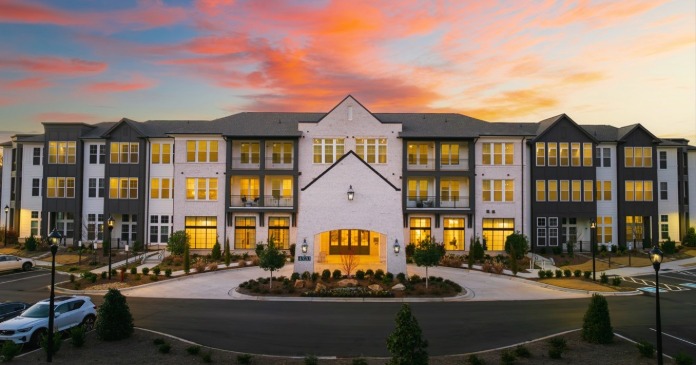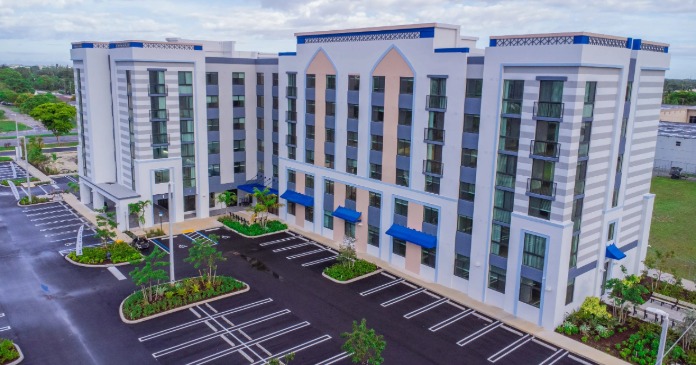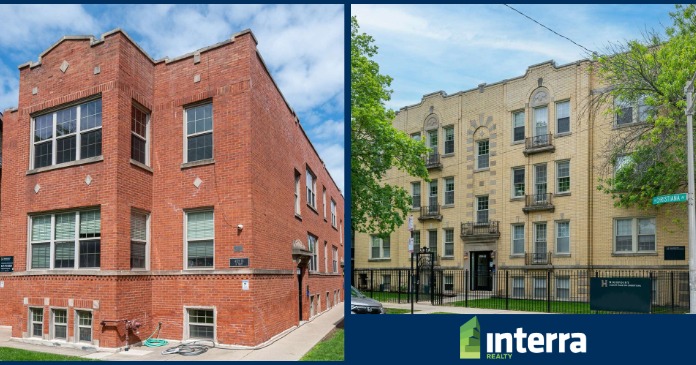The latest buzz at a recent multifamily conference revolved around interest rates and where they were likely to head in the short term. Will it go up or down? Will the fed hold the line? How will the market react? How will lenders and investors react?
For the housing industry, fed watching has become a national spectator sport. Apartment owners cheer as rates go up and envision occupancies increasing. Single-family homebuilders cringe as mortgages and home prices rise and sales drop. And everyone else makes side bets on how long the rates will stay up or down and what that will do to prices, cap rates and so on.
Before the October meeting of the Federal Reserve, the general consensus among economists and industry observers is that the fed would likely leave short-term rates untouched and that proved to be the case. For the third consecutive time, the fed held off on rate increases but warned increases may be needed in the future to offset inflation. The target for the federal funds rate charged on overnight loans between banks remains at 5.25 percent, unchanged since
A statement released by the fed following the meeting voiced concerns about inflationary risks and a slowing economy due to the cooling of the housing market. Inflation rose 2.9 percent in September, its highest level in the past 10 years and higher than the 2 percent level the fed prefers. One wonders if former Federal Reserve Chairman Alan Greenspan would have showed as much leniency given his legendary low tolerance of inflation. Some observers think the fed’s aggressive pursuit of inflation under Greenspan’s tenure hurt the economy more than
The housing market, as diverse as it is, is highly sensitive to interest rates and different sectors react in opposite ways to their rise and fall. Higher rates lead to higher mortgage rates, which offset single-family sales and construction. At the same time, higher rates benefit the apartment market as would-be buyers who are pushed out of the home-buying market turn to rental units.
Fed Chair Ben Bernanke has said that housing was going through a correction that would curtail economic growth by a full percentage point in the latter half of the year.
“It’s a different scenario right now. As rates rise, developers are forced to pursue financing and shorter closing times more aggressively and within shorter timeframes,” says Stuart Poppel, of the real estate practice group of the Philadelphia office of international law firm Greenberg Traurig, LLP, one of the largest law firms in the U.S. based on number of attorneys.
“Borrowers are seeking rate locks with equity investors insisting on rate locks,” adds Poppel. “The affect of higher rates on the affordable tax credit market is bringing down investor pricing 3 to 5 cents across the board. Pricing in this market has been very high for the past 18 to 24 months with yields low. Fannie Mae has been buying a lot of tax credits because they’re willing to close with lower yields in the 4 to 5 percent range in order to do the volume.”
Poppel sees the likelihood that we’ll see increased yields and decreasing prices through the rest of this year and into early 2007.
“Deals will still get done whether rates go up or not,” says Poppel. “There’s still a lot of money from pension funds and investors chasing properties.”
What developers and brokers say
“There are different impacts from interest rates depending on whether you’re an operator seeking to borrow money or a renter considering buying a home,” says Alan Hammer, acting chairman of Kushner Companies, a diversified private real estate organization involved in the ownership, development, redevelopment and management of prime single and multifamily housing, commercial, retail, industrial and hotel properties throughout the Northeast and Mid-Atlantic regions.
Kushner’s residential management arm, Westminster Management LLC, was named Property Management Company of the Year 5,000+ Units by the New Jersey Apartment Association. Westminster manages nearly 18,000 apartment units. Principals of the company are involved in ownership of in excess of 22,000 apartment units; and the company’s commercial portfolio consists of nearly 5 million square feet of office, industrial and retail space; and thousands of acres of land suitable for development.
“Right now the interest rate and cap rate environment are very favorable,” says Hammer. “Interest rates really haven’t moved very much and historically are still quite low. If they go up, the value of apartments will come down and cap rates will increase. In our market in New Jersey and Pennsylvania, the number of tenants looking to buy as opposed to rent is very low. Most of this area’s housing demand has been met and we’re left with renters by choice.”
Hammer maintains that the biggest impact on his market, where the majority of the rental stock is older and the landlords provide heat, has been energy prices. Others agree that energy prices and construction costs have had greater impact than interest rates. He sees no impact from condo conversions in his company’s market.
“Condominium sales may see a plateau or a slowdown as interest rates rise,” said Michael Girard, an investment broker, and Richard Robinson, principal with the Boston office of Apartment Realty Advisors in a forum on rebusinessonline.com. “The result may be increased occupancy for apartment communities.”
Another participant in the forum, Tim Ufkes, a partner with the Seattle, Wash., office of Hendricks & Partners, said, “Current interest rates are compressing apartment yields in the market. However, this is not an end of the world sign. The market perceives that the Federal Reserve is content to hold on interest rates. For the October/November meeting, the prediction is that Federal Funds overnight rate will remain at 5.25 percent. What this means for the market is that this is a good time to be both a buyer and seller.”
What economists say
“Despite sluggish growth, largely due to declining residential investment and auto production in the second half of this year, we are optimistic about a rebound in 2007,” said Doug Duncan, MBA chief economist and senior vice president for research and business development. “Long-term interest rates have remained low in the face of rising short-term rates, equity prices have risen nearly 20 percent, capital expenditures remain strong, the trade sector has turned from a big drag on growth to a modest stimulus, and energy prices have dropped sharply.”
Economic growth will continue to slow through the rest of 2006 but should return to near normal growth during 2007 and 2008, according to the latest economic forecast released by the Mortgage Bankers Association (MBA). Total residential mortgage production in 2006 will be $2.46 trillion, the fifth-highest level ever, but will drop another 14 percent in 2007 to $2.1 trillion and remain unchanged at that level in 2008.
“The financial markets perceive that the fed is now done with the tightening cycle and now expect an easing at some point in 2007,” said Duncan. “Although we expect core inflation to moderate going forward, we believe that the currently elevated rate will keep the fed from lowering interest rates despite signs of slowing economic activity. We expect that the fed will keep the fed funds rate steady at the current 5.25 percent through 2008.”
“The rates on fixed-rate mortgages are now below 6.4 percent,” said Duncan. “We expect long-term rates to remain low this year, helping to cushion the slowing in residential housing activity that has been underway for more than a year. Commercial real estate activity should remain a bright spot in the economy.”
“The 30-year fixed-rate mortgage yield should trend modestly higher over the course of the next two years, reaching 6.8 percent by the end of 2008,” said Duncan. “Thus, interest rates will still be quite low by historical standards.”
The risks to the forecast lie mainly on the downside. The housing sector could deteriorate more than projected, with sharper declines in single-family housing starts and home sales, resulting in sustained declining year-over-year home prices. This could lead to a marked slowdown in consumer spending growth. If so, the fed could start easing to prevent a recession. However, if core inflation remains elevated or even edges higher, the fed would likely remain on the sideline, increasing the risk of a recession. The MBA believes the probability for this scenario to be small.
NAHB Chief Economist David Seiders forecasts an 11.5 percent decline in housing starts this year, followed by another 11.7 percent drop in 2007. Seiders said he is assuming that rates on 30-year mortgages will average about 6.5 percent for some time, pointing out that long- term interest rates has been “performing beautifully” since mid-year.
“The Federal Reserve will hold the federal funds rate at the current 5.25 percent into the first half of next year,” said Seiders, “and will probably move it down to 5 percent by mid-2007.”
The big question is whether the economy is heading for a soft landing with weaker growth and a fall off in employment. The extent to which the economy affects consumer spending and business hiring will impact the apartment market.
In the latest Emerging Trends in Real Estate 2007 annual study from the Urban Land Institute and PricewaterhouseCoopers LLP, analysts looked at real estate markets and see the boom of the past few years as over.”Nothing lasts forever,” says William E. Croteau, U.S. Real Estate Practice Leader for PricewaterhouseCoopers, “the fact is that real estate has enjoyed a very healthy ‘up’ cycle for a longer period than normal. Even so, real estate is still viewed favorably as an asset class and there is still a lot of money—especially from private funds and institutional investors—looking for the right opportunity. Although we don’t expect any major downturn in the marketplace, it’s likely that real estate’s overall performance will be more modest in 2007.”
In terms of individual property sectors, the apartment sector—specifically the moderate-income category—is ranked highest for investment return potential, replacing hotels, which captured the top rating last year. Emerging Trends attributes the apartment market’s strength to rising mortgage rates and high housing costs, which have shut some entry-level buyers out of the home-buying market. As the for-sale market softens, conversions of condominiums into apartments could cause some unwanted competition, the report cautions.
Do rates really matter
According to Mark Obrinsky, vice president of research and chief economist for the National Multi Housing Council, recent studies by the University of California and the NMHC, show no significant correlation between interest rates and home-ownership rates. Obrinsky further states that even if home-ownership were to keep rising for the remainder of the decade, renter households would still grow by 100,000 annually.
Obrinsky sees single-family housing prices and the growing “renter-by-choice” segment of the market as having greater impact on multifamily demand than low interest rates and inexpensive mortgages.
The changes that are really driving the rental market are new trends in demographics and population growth. Harvard University’s 2000 State of the Nation’s Housing report maintains that if home-ownership costs rise enough to deter buyers, the number of new renters could jump from 1 million to as much as 6 million over the next decade.
Other economists give more credence to local market conditions and job growth than interest rates as indicators of the market’s viability. Impacts to the market are driven by numerous factors: construction costs, energy prices, federal and local regulation, inflation, and consumer spending.
“Interest rates are driven by market forces and not the Federal Reserve,” says Hammer. “Despite the actions the fed may take, lenders and investors will react as they think best, given market conditions that include a lot of factors.”
In an article on the impact of rates on the housing market, Dr. M.A. Anari, a research scientist with the Real Estate Center at Texas A&M University, maintains that changes in interest rates impact both the demand and supply side of home building.
In the article, which appeared in Texas A&M’s journal Tierra Grande published by its real estate school, Anari says that nearly all of the sectors in the U.S. economy were influenced by the fed funds rate cuts over the past three years, but the impact on real estate markets as the most pronounced.
“The Federal Reserve cut the fed funds rate 14 times between January 2001 and June 2003,” wrote Anari. “Lowering it from 6.5 percent to 1 percent, a 45-year low. Mortgage rates and interest rates charged for financing real estate sales and construction fell to historically low levels.”
From 2000-2003, these lower mortgage rates precipitated record refinancings and home equity withdrawals. The MBA reports that mortgage refinancing rose from 23 percent of total origination in the first quarter of 2000 to an all-time high of 74 percent by the fourth quarter of 2002. The dollar volume of these transactions went from $234 billion in 2000 to $1.8 trillion in 2002. In 2003, the boom continued, amassing $2.2 trillion in refinancing origination for the period from January to October.
Dr. Anari says that changes in rates don’t translate into concrete reactions by the marketplace. Economic forecasts influence the behavior of market participants and can alter the course of market fundamentals. Knowing where rates stand enables real estate professionals to counter potential adverse impacts on their markets by using marketing methods and adjusting strategies to balance out economic forces.
Such methods may include controlling costs, adjusting pricing, concessions, or changing geographic or demographic market focus.
In the Emerging Trends survey the researchers state that despite an expected downturn in the nation’s economic growth, the consensus among survey respondents is that the economy has enough steam to support demand growth in real estate markets and that those markets appear well positioned to weather any mild repercussions brought on by a slowdown. Those less optimistic about the economy are worried about the decline in the housing sector and a drop in consumer spending.
One trend the survey uncovered that bears watching is renewed interest in green building. Conserving energy costs to offset the impact of high energy prices is spreading across all property sections. While green buildings can cost up to 10 percent more to construct, energy savings can approach 35 percent.
“Even with record level single-family home sales,” says Obrinsky, “demand for apartments has continued to strengthen across the board. As the home-ownership market cools, demand for apartments will rise even further.”















